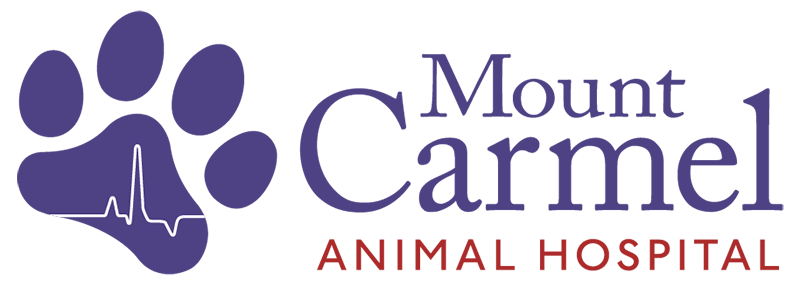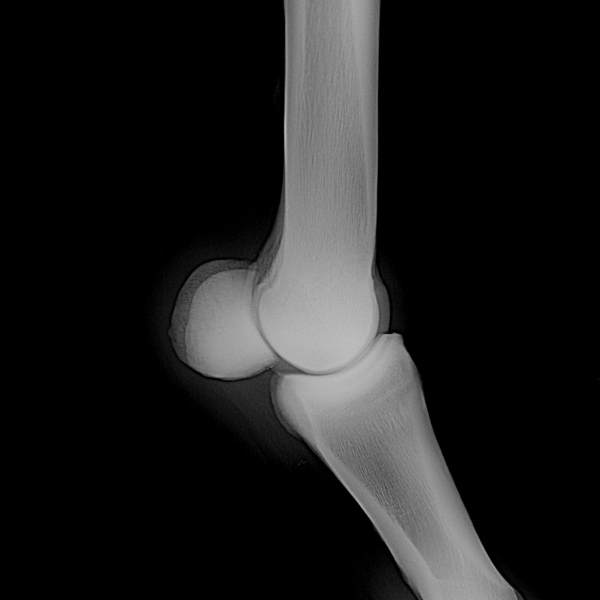Veterinary Orthopedics
Veterinary orthopedics focuses on diagnosing and treating musculoskeletal conditions in animals, including fractures, joint disorders, ligament injuries, and congenital abnormalities. It involves surgical and non-surgical approaches to restore mobility and function. Common procedures include:
- Fracture Repair – Using plates, screws, pins, or external fixators such as casts and splints to stabilize broken bones.
- Cruciate Ligament Surgery – Treating CCL injuries in dogs (equivalent to ACL injuries in humans)using techniques like TPLO (Tibial Plateau Leveling Osteotomy) or TTA (Tibial Tuberosity Advancement).
- Hip Dysplasia Management – Options range from medication and physiotherapy to surgical interventions like total hip replacement or femoral head ostectomy (FHO)
- Patellar Luxation Surgery – Correcting kneecap dislocations through realignment procedures.
- Arthroscopy – A minimally invasive technique for joint examination and treatment.
Orthopedic Injuries & Cats
The most common orthopedic injury in cats is a fracture, particularly of the femur, pelvis, or forelimbs. These injuries often result from:
- Falls from heights (known as “high-rise syndrome”)
- Car accidents
- Fights with other animals
- Getting caught in doors or furniture
Other common orthopedic conditions in cats include:
- Pelvic fractures
- Common in high-impact trauma (e.g., car accidents, falls).
- Treatment: often requires surgery if the pelvic canal becomes too narrow.
- Femoral fractures
- Common in high-impact trauma (e.g., car accidents, falls).
- Treatment: Surgical repair with plates, screws, pins, FHO, or external fixators such as casts or splints, depending on severity.
- Hip dysplasia
- A genetic condition leading to joint instability and arthritis. It can occur in cats but is more common in dogs.
- Treatment: Weight management, physical therapy, or FHO.
- Patellar luxation
- Kneecap dislocation.
- Treatment: Surgery if severe.
Preventing orthopedic injuries in cats involves a mix of environmental management, proper care, and regular veterinary checkups. Here’s what you can do:
- Prevent Falls and High-Rise Syndrome
- Install secure window screens to prevent falls from heights.
- Provide stable cat trees with soft landings to avoid missteps.
- Avoid letting cats roam on high balconies without proper barriers.
- Reduce the Risk of Accidents
- Keep cats indoors or in a secure outdoor enclosure to avoid car accidents and animal fights.
- If outdoors, use a cat harness and leash for supervised walks.
- Be mindful of closing doors and reclining chairs, as cats can get caught.
- Maintain a Healthy Weight
- Obesity puts extra stress on joints, increasing the risk of fractures and arthritis.
- Feed a balanced diet and provide interactive play for exercise.
- Provide Safe Climbing and Jumping Spaces
- Offer cat-friendly steps or ramps for high areas.
- Ensure furniture is stable so cats don’t knock over objects while jumping.
- Nail and Paw Care
- Trim claws regularly to prevent getting stuck in carpets or furniture, which can cause falls.
- Annual Wellness Visits
- Regular exams help detect early signs of joint issues or bone diseases.
- If your cat is limping or avoiding activity, schedule a visit to rule out injuries.
Orthopedic Injuries & Dogs
A wide range of orthopedic injuries occur in dogs. The most common orthopedic injuries in dogs include:
- Cranial Cruciate Ligament (CCL) Tears
- Equivalent to ACL injuries in humans.
- Causes: Sudden twisting movements, obesity, or degenerative changes.
- Treatment: TPLO (Tibial Plateau Leveling Osteotomy), TTA (Tibial Tuberosity Advancement), or extracapsular repair.
- Hip Dysplasia
- A genetic condition leading to joint instability and arthritis.
- More common in large breeds like Labradors, German Shepherds, and Golden Retrievers.
- Treatment: Weight management, physical therapy, or total hip replacement/FHO.
- Patellar Luxation
- Kneecap dislocation, often seen in small breeds like Chihuahuas and Pomeranians.
- Treatment: Surgery if severe.
- Fractures (Broken Bones)
- Common in high-impact trauma (e.g., car accidents, falls).
- Treatment: Plates, screws, pins, or external fixators such as casts or splints, depending on severity.
- Intervertebral Disc Disease (IVDD)
- A spinal condition causing pain or paralysis, common in Dachshunds and French Bulldogs.
- Treatment: Medication, crate rest, or surgery for severe cases.
- Osteochondritis Dissecans (OCD)
- A joint cartilage defect, often in young, large-breed dogs ( such as Great Danes, Rottweilers).
- Treatment: Surgery to remove cartilage fragments.
- Brachial Plexus Avulsion
- Nerve injury from severe trauma (e.g., being hit by a car), leading to limb paralysis.
- Treatment: Physical therapy or amputation if non-functional.
Preventing orthopedic injuries in dogs involves a combination of physical care, proper training, and environmental management. Here are some key steps to help reduce the risk:
- Maintain a Healthy Weight
- Obesity is one of the leading contributors to joint stress, particularly on the knees, hips, and spine.
- Feed a balanced diet with the right amount of calories and provide plenty of exercise to keep your dog at a healthy weight.
- Provide Regular Exercise
- Exercise helps keep muscles strong, which supports joints and bones.
- Avoid excessive high-impact activities like jumping or running on hard surfaces, especially for puppies and older dogs.
- Tailor the exercise routine to your dog’s breed, age, and activity level. For example, a large breed might benefit from moderate walks, while high-energy breeds need more vigorous exercise.
- Be Cautious with Joint Stress
- Avoid repetitive strain activities (like jumping onto high furniture or playing fetch on hard surfaces) that can stress the joints.
- If your dog enjoys jumping or agility activities, start with low-impact training and build up strength gradually.
- Use dog ramps or stairs to help your dog get on and off furniture or in/out of cars, especially for senior dogs or those with joint issues.
- Joint Supplements and Nutrition
- Consider adding joint supplements like glucosamine and chondroitin to your dog’s diet, particularly for larger breeds or aging dogs. These help support cartilage health and joint function.
- Ensure your dog is getting enough omega-3 fatty acids (found in fish oil), which have anti-inflammatory benefits for joints.
- Regular Vet Checkups
- Routine veterinary checkups help detect early signs of joint problems or bone abnormalities (like hip dysplasia or arthritis).
- Keep an eye out for limping, stiffness, or any changes in mobility, as these could be early signs of an orthopedic issue.
- Proper Training and Leash Use
- Positive reinforcement training helps your dog avoid activities that could cause injury, like jumping or pulling.
- Use a well-fitting harness and leash to avoid injury to the neck, back, or joints during walks.
- Consider Breed-Specific Needs
- Be mindful of breed-specific orthopedic issues (e.g., hip dysplasia in large breeds like German Shepherds, labradors, or Rottweilers). Some breeds may require extra care, like weight management or more joint protection.
- Avoid Rough Play
- While dogs love to play, rough play or uncoordinated activities can cause sprains, strains, and fractures. Be cautious with playmates, especially if they are much larger or more energetic.
Does my pet have an orthopedic problem?
Recognizing whether your pet has an orthopedic problem can be tricky, especially since animals are good at hiding pain. However, there are several signs you can watch for that may indicate an orthopedic issue. Here’s what to look for:
- Limping or Lameness
- Favoring one leg or limping while walking.
- Not putting weight on a limb or using it less.
- This is a common sign of joint pain, fractures, or soft tissue injuries.
- Decreased Activity Level
- Reluctance to move or play, especially if they used to be active.
- Hesitance to jump onto furniture or stairs, or avoid climbing.
- This could be due to pain, arthritis, or injury in the limbs, spine, or hips.
- Swelling or Heat in the Affected Area
- Visible swelling around joints or limbs.
- Warmth or heat felt on the injured area (which can indicate inflammation or infection).
- This often happens with fractures, sprains, or soft tissue injuries.
- Pain or Sensitivity
- Yelping or growling when touched or handled, especially around a specific area.
- Licking, biting, or chewing at a specific body part due to pain.
- Pets may also become more irritable or withdrawn when in pain.
- Stiffness or Limited Mobility
- Difficulty getting up or sitting down, particularly in the morning or after lying down for a while.
- Stiffness or trouble moving freely.
- Hunched posture, especially in the back, or difficulty standing normally.
- Abnormal Posture
- Pets may adopt an abnormal position to avoid putting pressure on the injured area.
- This could include keeping a limb elevated, a bent body, or shifting weight awkwardly.
- Decreased Appetite or Change in Behavior
- Some pets may become less interested in eating or drinking if they are in pain.
- More withdrawn or quiet behavior may be a sign of discomfort.
- Difficulty with Coordination
- Stumbling, dragging a limb, or uncoordinated movements.
- This could indicate a neurological issue related to an orthopedic problem, like a slipped disc in the back or leg.
- Abnormal Sounds
- Popping, cracking, or grinding sounds when your pet moves (especially when joints are involved).
- Clicking noises in the joints can indicate ligament or cartilage issues.
- Decreased or Abnormal Range of Motion
- If your pet resists or reacts when you try to move a limb or joint, they may have limited mobility due to injury.
- Joints that feel stiff or locked could be signs of arthritis, dislocation, or a sprain.
What To Do Next
- Limit Movement: Restrict your pet’s activity, prevent them from jumping or running.
- Cold Compress: Apply a cold pack (wrapped in a towel) to the injured area for 10-15 minutes to reduce swelling.
- Schedule a Visit: If your pet is showing signs of orthopedic pain or injury, it’s important to schedule an office visit. One of our veterinarians will perform an exam to check for clinical symptoms. We may also recommend X-rays or other diagnostic tests to determine the cause of the problem.

